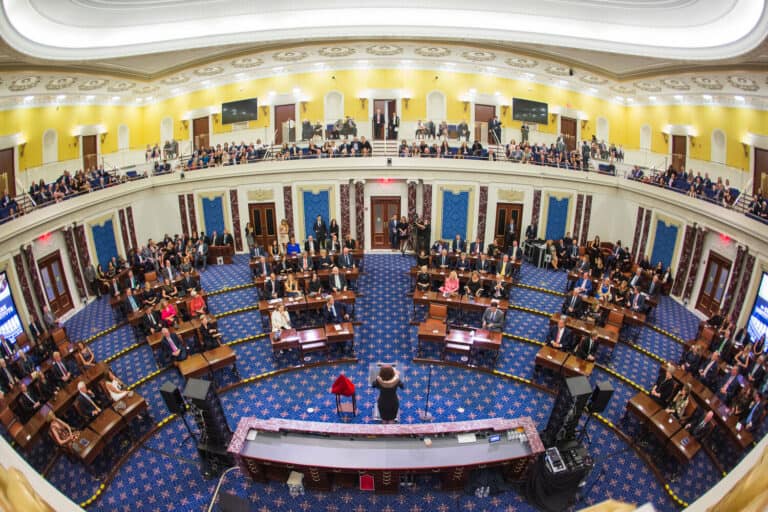Justice Brett Kavanaugh’s first opinion for the Supreme Court is a win for arbitration. Yesterday, Kavanaugh delivered a unanimous opinion in Henry Schein v. Archer and White Sales holding that the Federal Arbitration Act (“FAA”) requires a court to enforce an arbitration agreement that calls for arbitrators to determine whether an issue is arbitrable, even if the court finds that the arbitrability claim is “wholly groundless.” Looking to the Act’s language, Kavanaugh wrote that “[t]he Act does not contain a ‘wholly groundless’ exception” and that “[w]hen the parties’ contract delegates the arbitrability question to an arbitrator, the courts must respect the parties’ decision as embodied in the contract.” There are currently two other arbitration-related cases pending before the court, both of which involve employment contracts. In New Prime, Inc. v. Oliveira, the Court will determine whether language contained in the FAA’s saving clause excluding “seamen, railroad employees, or any other class of workers engaged in foreign or interstate commerce” from its purview applies to independent contractors and employees of a transportation company. In Lamps Plus Inc. v. Varela, the court will decide whether contractual language committing the parties to resolve disputes via arbitration “in lieu of any and all lawsuits or other civil legal proceedings” includes class arbitration. As Charlotte Garden wrote yesterday, mandatory arbitration clauses—especially those that bar collective action—have emerged as a means of preventing workers from “vindicat[ing] their rights in relatively low-dollar-value cases . . . .”
On Monday, discussions between United Teachers Los Angeles and the Los Angeles Unified School District failed to produce an agreement. As a result, over 30,000 teachers are scheduled to strike on Thursday, though a legal technicality involving the union’s duty to give its members ten days’ notice before a strike may push the start date to Monday. The strike will affect some 480,000 public school students. Monday’s negotiation was the first face-to-face meeting between the parties since October, when bargaining over a new contract broke down on staffing and pay issues. The parties will meet this morning in a last-ditch attempt to reach an agreement.
As Sears heads toward liquidation, its employees are calling for a hardship fund that would provide laid-off workers a week’s pay for every year of service to the company. The workers are looking to the organizing efforts of Toys ‘R’ Us employees as a model. After Toys ‘R’ Us filed for bankruptcy and liquidated its U.S. stores last year, its workers were successful in winning $20 million in severance pay. Sears, which employs 68,000 workers across 142 stores, filed for bankruptcy on October 15, 2018 after ten years of declining revenues.
Broadway actors and stage managers are striking against production companies for a share of their shows’ profits. Actors’ Equity, the national labor union that represents the theater workers, announced earlier this week that it would not allow its members to take part in the development of new Broadway shows until the negotiation of a new contract that includes some degree of profit-sharing. Looking to Hamilton’s profit-sharing model, Actors’ Equity wants producers to share one percent of profits after the show breaks even with the workers who took part in its development. The Broadway League, the association that represents producers, has thus far maintained that individual producers should determine profit-sharing on a case-by-case basis, but has signaled its intention to continue negotiations with the union.






Daily News & Commentary
Start your day with our roundup of the latest labor developments. See all
October 29
9th Circuit rejects challenge to NLRB's constitutional structure; preemption challenges to state labor peace statutes
October 28
Two federal unions oppose CBA cancellations, another federal union urges Democrats to end the government shut down, and Paramount plans for mass layoffs
October 27
GM and Rivian announce layoffs; Boeing workers reject contract offer.
October 26
California labor unions back Proposition 50; Harvard University officials challenge a union rally; and workers at Boeing prepare to vote on the company’s fifth contract proposal.
October 24
Amazon Labor Union intervenes in NYS PERB lawsuit; a union engages in shareholder activism; and Meta lays off hundreds of risk auditing workers.
October 23
Ninth Circuit reaffirms Thryv remedies; unions oppose Elon Musk pay package; more federal workers protected from shutdown-related layoffs.